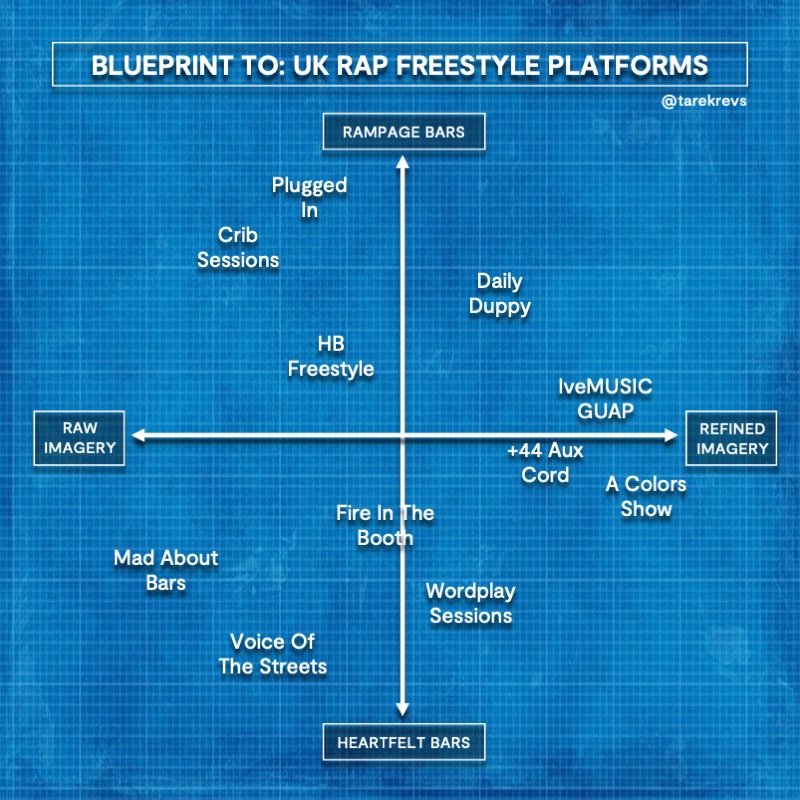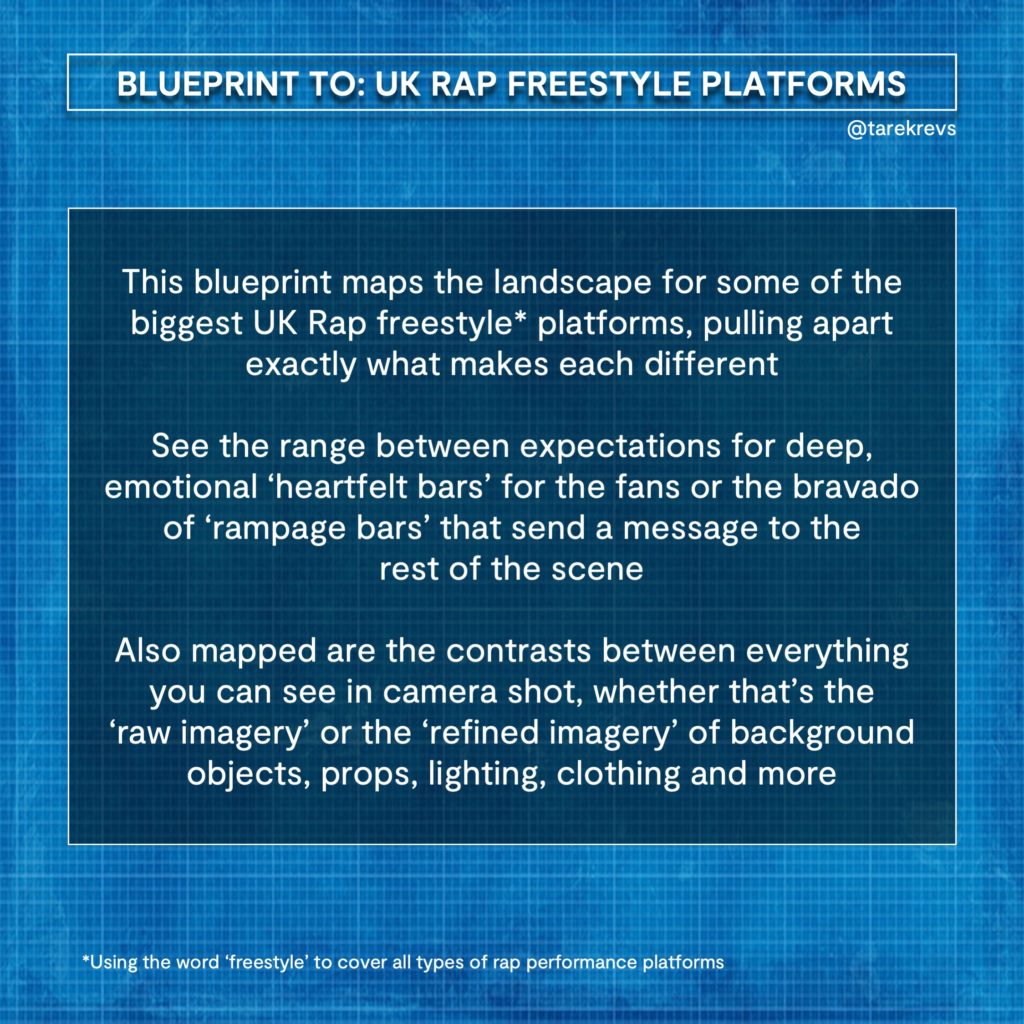#BlueprintTo: UK Rap Freestyle Platforms [@tarekrevs]
![#BlueprintTo: UK Rap Freestyle Platforms [@tarekrevs]](https://guap.co.uk/wp-content/uploads/2021/02/Blueprint-To-UK-Rap-Freestyle-Platforms-18.01.21.v1-180x180.jpg)
#BlueprintTo: cuts through the noise to detail and contextualise, on this occasion, the UK’s Rap Freestyle Platforms.
Since my days hosting freestyles in a boarded-up basement or live cyphers on Reprezent FM, to filming historic moments like Kenny Allstar bringing through Stormzy for his first live radio freestyle – I’ve felt and loved the energy of these unique moments.
We’ve moved from Hip Hop and Grime DVDs, to the birth of SBTV and the mass of YouTube based platforms that followed and now over live streams. Regardless of the visual era, in the UK the filmed Rap freestyle has been a backbone of the scene, whether the money and brands were there or not.
Over the years, more and more of these platforms have emerged and as the scene has matured, we’ve seen these platforms diverge in how they present themselves and what each of them stand for. I created this blueprint to make sense of all the noise, map the directions that these platforms are going in as well as where the empty spaces are.
If I did this 10-15 years ago or even 5 years ago, you would see a lot more of these platforms concentrated around the ‘Raw Imagery’ space. This is because of legendary earlier platforms with the curb-side bars like Risky Roadz and SBTV‘s F64 which are either no longer running or running infrequently. Today we see a lot more platforms moving toward the other side of the spectrum with the likes of the Berlin-based Colors Studio or GUAP’s lveMUSIC, curating platforms that not only facilitate rappers but many Soul and R&B singers too.
Even GRM has moved Daily Duppy from a simple mic and some road signs set up to a much sleeker studio output. You also have the emergence of the Amazon backed +44 playing in this space too against streaming rival Apple (Music 1) who also feature in this landscape.
This blueprint can be useful for an artist and their management to understand how to deliver well and win on each of these respective platforms. But it also raises a number of questions now for both Rap content makers and Rap audiences. For example…
- How can each platform move harder into or away from their current territories?
- Where are the gaps for new platforms to emerge, away from the clusters, and what do they have to do to hold down that position?
- What do the fans want today? What will they want tomorrow? And what will they want years from now as UK Rap and its many sub-forms continue to mature and spread their impact globally?
The blueprint is just that, a blueprint, take from it what you want and adapt it to your own needs.
Words by: Tarek Chaudhery



